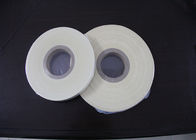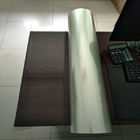
At the beginning of March, the Ministry of Agriculture has introduced a series of policy documents, played against the combination of soil pollution prevention and control boxing.
March 6, the Ministry of Agriculture issued on the implementation of the "Soil Pollution Prevention Action Plan" implementation of the views (hereinafter referred to as "opinions"), involving agricultural land to investigate the situation of soil pollution, promote water and fertilizer regulation, strict control of serious pollution of cultivated land, Cultivated land management and rehabilitation, agricultural clean production and so on, the full implementation of the agricultural system, "soil ten", made a specific deployment. Prior to February 28, the Ministry of Agriculture issued a "2017 agricultural non-point source pollution prevention and hardening key work arrangements", stressed the strengthening of chemical fertilizer and pesticide control, comprehensive utilization of plastic film, agricultural non-point source pollution prevention and control technology promotion and so on. In full swing, in the March 8, the Ministry of Agriculture issued "" thirteen five "national agricultural product quality and safety promotion plan", on the standardization of agricultural production to make all-round planning. March 9, the National Agricultural Technology Center issued "2017 pesticide mitigation technology demonstration program", from the precise application, to promote the reduction of synergistic technology demonstration and technical aspects of the technical requirements of agricultural production.
Less than half a month, the policy has introduced, from the understanding of agricultural land conditions, scientific water and fertilizer irrigation control source pollution, to the implementation of standardization and green production, the goal point to the point: to protect the health of the soil tightly.
Some analysts believe that in the Ministry of Agriculture issued on March 6, "Opinions", clearly put forward to achieve "agricultural production safety" as the core objectives, "to improve the quality of soil environment", "to improve the safe utilization of polluted arable land "For the purpose of the work, put forward 10 opinions on the implementation of 32. This is not only in the overall goal with the "soil ten" one by one echo, and its measures are also quite targeted and practical, is the agricultural land pollution problem real solution and control road map, embodies the protection of food Safety, agricultural product quality and safety of agricultural products and environmental protection, and further protect the people's health determination.
Fill the shortcomings of soil pollution prevention and control of agricultural land
Spring, not only the natural recovery of all the season, but also farmers farming a good season. Soil pollution control large data analyst Zhou Yongfeng said in an interview, the Ministry of Agriculture selected in the first quarter of 2017 issued its implementation of the "soil ten" implementation of the views should be in the national large-scale agricultural cultivation before the start of the institutional arrangements , To guide the national agricultural production process to attach importance to the implementation of agricultural land and soil pollution prevention and control of the various tasks, has a strong sense of significance.
Agricultural non-point source pollution prevention and control is the implementation of the "Soil Pollution Prevention Action Plan" focus of the work.
Previously, it was possible to elaborate on the situation of soil pollution in China's agricultural land, mainly on April 17, 2014 Ministry of Environmental Protection, Ministry of Land and Resources jointly issued the "National Soil Pollution Survey Bulletin", which indicates that China's current " ", Farmland, grassland, grassland and other agricultural land over the standard rate of more than 10%, arable land in the proportion of heavy pollution has reached 1.1%. Agricultural land pollution has become a prominent platform for building a moderately prosperous society, further threatening food security, the quality and safety of agricultural products and the health of the people. The "Soil Pollution Prevention Action Plan" issued by the State Council on May 28, 2016 and the local governments in the provinces and autonomous regions in the year of 2016 to the beginning of 2017, respectively, formulated and promulgated the local implementation of the "soil ten" documents, the agricultural land Soil pollution prevention and control as an important and even the main content.
The "Opinions" issued by this section will effectively strengthen the soil pollution prevention and control of agricultural land and gradually improve the soil environmental quality and other aspects of the work to make specific arrangements, but also once again stressed the specific objectives of the future prevention and control of soil pollution, including to ensure that priority protected land area is not reduced , The soil quality is stable and good, by 2020 to achieve the safe utilization of polluted arable land to reach about 90%. In the mild pollution of cultivated land to achieve safe use of an area of 4000 mu, governance and restoration area of 10 million mu, heavily polluted farmland planting structure adjustment and returning farmland to forest and grassland area to reach 20 million mu and so on.
There are two major foundations in the deployment of soil pollution control. First, find out the family property, to carry out detailed investigation of soil pollution. Yan Changrong, a researcher at the Institute of Agricultural Environment and Sustainable Development of the Chinese Academy of Agricultural Sciences, said that the amount of soil pollution that has been published is not clear, and that some of the soil pollution exceeding the standard rate is the rate of excess and does not represent the distribution and condition of soil pollution. Second, we must promote the establishment of a sound regulatory standards system. The National People's Congress has put the enactment of soil pollution control law into this year's legislative plan.
More stringent measures to soil, the release of more land dividends
Zhou Yongfeng that the Ministry of Agriculture "land" policy, mainly based on arable land quality survey and grading results based on the implementation of targeted high-standard farmland construction, arable land protection and quality improvement, saline soil improvement; Soil environmental quality as an important dimension of agricultural land quality grading, and the introduction of special views on the implementation of soil pollution prevention and control, in the Ministry of Agriculture "land" policy is the first time. From this point of view, the future of China's agricultural land quality survey, monitoring and classification will be more stringent, its use will be more secure.
More stringent land policy, will also spawn the industry related industry "dividend". The gap creates problems, problems arise, and opportunities arise. Zhou Yongfeng said: "According to the national 'soil ten', around the 'soil ten' and the Ministry of Agriculture to implement the" opinion "of the comparative analysis, due to clear the 'classification, sub-use, phased' governance line, from the promotion of China's economy Development and the eco - environmental protection industry to build a pillar of the role of industry, construction land, agricultural land and land use operations, will produce a different dividend.
From the agricultural land of the "land" dividend, because of its core goal is to achieve "agricultural production safety", its proposed task measures to be implemented in the near future, which contains the market opportunities and can release a huge bonus.
On the whole, the relevant market of agricultural land "soil control" action can be divided into basic capacity building, protection and prevention, risk control, management and repair, safe use, grain and agricultural products quality and safety and other basic plate The "Opinions" in the proposed task measures, also concentrated in the above several plates. Zhou Yongfeng said that for the current soil pollution prevention and control, especially agricultural land pollution prevention and control units, you can refer to the above several plate of the task measures, through the market with the allocation of resources to assist the management to carry out efficient work, the release of "governance Soil "dividends, thus promoting economic and social sustainable development.
Hot words: plastic film
Fight the plastic film recovery battle
Yan Changrong, a researcher at the Institute of Agricultural Environment and Sustainable Development, Chinese Academy of Agricultural Sciences, has long been engaged in the research of film mulching and residual pollution prevention and control, and expressed "very pleased" with the opinions expressed by the Ministry of Agriculture. But at the same time he pointed out that the current large-scale and high-intensity use of plastic film, making the residual film pollution prevention and control of the task is very arduous in the implementation of governance and implementation of the "soil ten" target has considerable difficulty.
Plastic film mulching technology has not only expanded some crop cultivation areas because of its good warming and moisture conservation and weed control, but also greatly improved the yield of crops and improved the quality of agricultural products, showing good economic benefits, to protect China's agricultural products Security played an important role. According to national statistics, in 2015 the national plastic film mulch area reached 275 million mu, plastic film input amounted to 145.5 million tons, accounting for more than 80% of the global plastic film mulch area. China's film mulching technology research and application in the world at the forefront, but also the only film residue pollution problems in the country.
Membrane recovery into the problem to be overcome
The vast area of plastic film use, the complex planting patterns and the use of methods, as well as the low tensile strength and thin film, resulting in large-scale film mulching after use, making plastic film recycling has become a major problem. Therefore, by increasing the quality of the film for the plastic film to create conditions to become an important issue. The reporter learned in the interview, China's current film production standards in 1992 to develop the "polyethylene blown agricultural ground cover film", the provisions of the film thickness of 0.008mm, but allow the limit deviation up and down floating 0.003mm, the average deviation of ≤ 15 %. While the film is sold in accordance with the weight, the thinner the film, the lower the cost of use. In order to reduce the cost, a large number of ultra-thin film in the market ubiquitous, making the use of plastic film after the serious, low tensile strength, further aggravating the recovery difficulties. In Japan and Europe, ordinary film thickness is generally above 0.02mm, after use can still maintain a high tensile strength, easy to recover. Therefore, increasing the thickness of the film and increasing the strength of the film to become an important prerequisite for film recovery.
In addition, Yan Changrong stressed that the new national standard film will also become the driving force for film recycling. At present, the new national standard film has been submitted to the National Standards Committee, is seeking the views of various departments.
Biodegradable plastic film will become an important direction
Yan Changrong told reporters, in order to solve the problem of residual film pollution, we should learn from foreign experience, in some areas of crop cultivation to promote the application of biodegradable plastic film. The so-called biodegradable plastic film, refers to the natural environment can be caused by microbial degradation of plastic film. According to the main raw materials can be divided into: natural biomass as raw material degradation of the film and the base of the oil-based degradation of the film. The natural biomass such as starch, cellulose, chitin, etc., can be modified, and then the formation of biodegradable film to produce raw materials.
In the world, Europe and Japan in the biodegradable materials, technology and biodegradable film development and application has been at the forefront. Japan's biodegradable plastic film in the plastic film market share rising, has reached about 10%, the application of a higher proportion of local areas, such as the four countries in Japan, the proportion of biodegradable plastic film cultivation has more than 20%.

 Your message must be between 20-3,000 characters!
Your message must be between 20-3,000 characters! Please check your E-mail!
Please check your E-mail!  Your message must be between 20-3,000 characters!
Your message must be between 20-3,000 characters! Please check your E-mail!
Please check your E-mail! 










